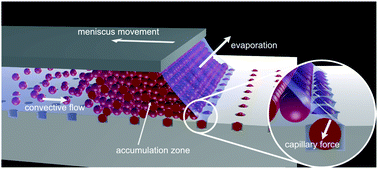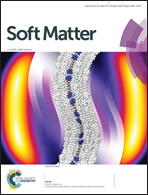Capillary assembly as a tool for the heterogeneous integration of micro- and nanoscale objects
Abstract
During the past decade, capillary assembly in topographical templates has evolved into an efficient method for the heterogeneous integration of micro- and nano-scale objects on a variety of surfaces. This assembly route has been applied to a large spectrum of materials of micrometer to nanometer dimensions, supplied in the form of aqueous colloidal suspensions. Using systems produced via bulk synthesis affords a huge flexibility in the choice of materials, holding promise for the realization of novel superior devices in the fields of optics, electronics and health, if they can be integrated into surface structures in a fast, simple, and reliable way. In this review, the working principles of capillary assembly and its fundamental process parameters are first presented and discussed. We then examine the latest developments in template design and tool optimization to perform capillary assembly in more robust and efficient ways. This is followed by a focus on the broad range of functional materials that have been realized using capillary assembly, from single components to large-scale heterogeneous multi-component assemblies. We then review current applications of capillary assembly, especially in optics, electronics, and in biomaterials. We conclude with a short summary and an outlook for future developments.



 Please wait while we load your content...
Please wait while we load your content...